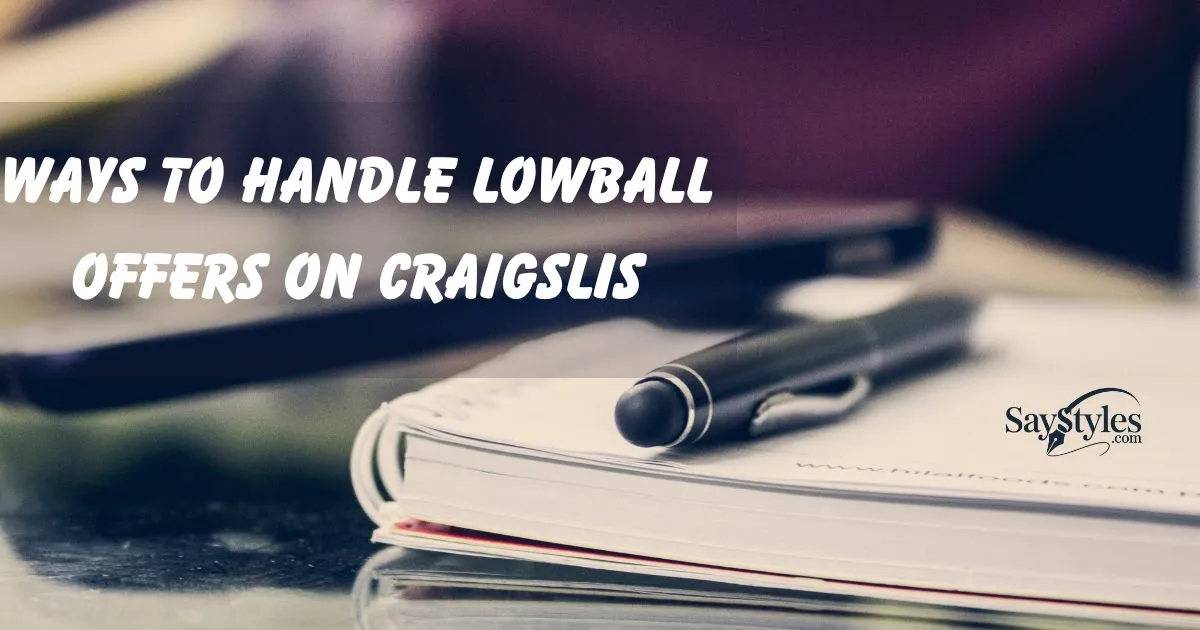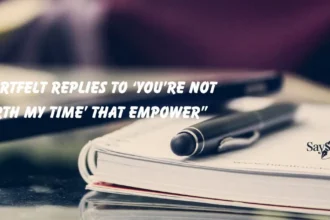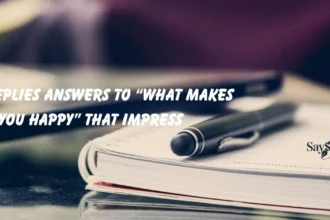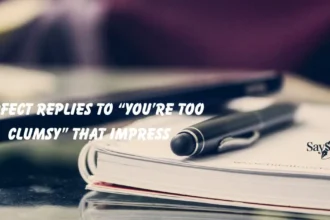A fair deal starts with a fair offer, but when you’re on Craigslist, that’s not always the case. If you’ve ever tried selling something online, you know the frustration of lowball offers those ridiculously low prices that just don’t do your item justice. Trust me, I’ve been there, and it can be downright frustrating. But here’s the good news: You don’t have to just settle for them. When you’re looking to turn that low offer into a better deal or politely decline without wasting your time, this guide has got you covered.
In this article, I’ll walk you through smart, effective, and even humorous ways to respond to lowballers, helping you handle them with confidence and get the deal you deserve!
What “Handle Lowball Offers” Really Means
Handling lowball offers means responding to offers or proposals that are much lower than expected, often in sales, negotiations, or casual trades. It requires tact, confidence, and strategy to maintain professionalism while protecting your value or interests.
List of Ways to Handle Lowball Offers on Craigslist
- Thanks for your offer, but I’m firm on the price
- I appreciate the offer, but the price is already quite reasonable
- I understand your offer, but I’m not able to lower the price
- That’s below my minimum price. Please let me know if you can meet my asking price
- I’m sorry, but that’s too low for me to consider
- My price is firm, but I’m happy to answer any questions about the item
- I’m not able to accept that offer. Are you willing to meet the asking price?
- I’m happy to negotiate, but I can’t go that low
- I’ve set the price based on similar items and their condition. I hope you understand
- Thanks for the offer, but I’m not interested in lowering the price
- That’s lower than I’m willing to accept. Please let me know if you can offer more
- I appreciate your offer, but I’ve priced this fairly based on market value
- Thanks, but that’s not within my price range
- I’m looking for offers closer to my asking price. Let me know if you’re interested
- I appreciate your offer, but I’ve had other interest at my asking price
- Thanks, but I’m not willing to go that low
- I’m not able to accept that offer, but I’m open to discussing a reasonable price
- Thanks for the offer, but I’m confident in the price I’ve set
- I’ve priced this based on its condition and current market value. Let me know if you can meet my asking price
- I’m not willing to accept that offer. Can you offer more?
- Thanks, but that’s lower than what I’m willing to accept. Please let me know if you’re interested in paying closer to the asking price
- I’m open to negotiation, but I can’t go that low. Can you make a higher offer?
- I’m confident in the price based on its value and condition. Please let me know if you can meet it
- I appreciate the offer, but I’ve already priced this fairly. Let me know if you’re willing to offer more
- Thanks for the offer. If you can come closer to my asking price, we can discuss further
- Thanks for the offer, but I’ve had better offers. Please let me know if you can improve your bid
- I’m not accepting offers below my asking price. Let me know if you’re interested at the full price
- I’m confident in the value of this item at my asking price. If you’re interested, let me know
- Thanks for your offer, but I can’t accept that amount. Please let me know if you’re willing to pay closer to my asking price
- Thanks, but that’s lower than what I’m willing to accept. Please let me know if you can offer more
- I appreciate your interest, but I can’t accept that offer
- I’ve had higher offers, so I’ll have to pass on this one
- I’m selling this at a fair price, so I’ll wait for the right buyer
- I appreciate your offer, but I’ve priced this competitively
- I’d rather keep it than sell for that price
1. Thanks for your offer, but I’m firm on the price.
Story:
Sarah listed her old furniture on Craigslist. Tom sent her a message offering a much lower price than her asking amount. Sarah decided to stay firm on her price since she knew it was fair for the quality.
When to Use:
Use this response when you’re confident that your price is already reasonable or you’re unwilling to go lower. It shows that you’re firm and not easily swayed by lower offers.
When Not to Use:
Avoid this response if you’re willing to negotiate a little. It can come off as rigid if you’re open to some flexibility.
Example:
Tom: Would you take $100 for this couch?
Sarah: Thanks for your offer, but I’m firm on the price.
How to Respond 🗣️:
Thank you for your offer! However, I’m firm on the price. I believe it’s already a great deal based on the quality and condition.
2. I appreciate the offer, but the price is already quite reasonable.
Story:
John was selling his bicycle on Craigslist for $200. Jane offered him $120, but John thought the price he set was already a fair one considering the bike’s condition. He wanted to politely explain that he wasn’t willing to lower it.
When to Use:
This response is great when you want to show appreciation for the offer but want to explain that your asking price is fair and non-negotiable.
When Not to Use:
Don’t use this if you’re open to negotiation or you’re in a hurry to sell. It might give the impression that you’re not flexible.
Example:
Jane: Would you take $120 for the bike?
John: I appreciate the offer, but the price is already quite reasonable.
How to Respond 🗣️:
I appreciate your offer, but I’ve priced it fairly considering its condition. The current price is already reasonable.
3. I understand your offer, but I’m not able to lower the price.
Story:
Lisa was selling her camera gear and received an offer from Mark for half the price she was asking. She knew the items were in excellent condition, so she kindly let Mark know that she couldn’t lower her price.
When to Use:
This works well when you understand the buyer’s budget but simply can’t drop the price any further. It’s polite and clear about your position.
When Not to Use:
Avoid this if you’re willing to consider a small reduction in price. It can sound final and close the door for any future discussion.
Example:
Mark: How about $250 for the camera?
Lisa: I understand your offer, but I’m not able to lower the price.
How to Respond 🗣️:
I get that you’re looking for a better deal, but I’m unable to lower the price. It’s already a great offer for what’s being sold.
4. That’s below my minimum price. Please let me know if you can meet my asking price.
Story:
Kevin was selling a gaming console that he knew was in high demand. Rebecca offered him $100, which was much lower than the price Kevin was comfortable with. He responded by letting her know what his minimum price was.
When to Use:
Use this when you want to let the buyer know that you have a minimum price you won’t go below. It invites them to meet you halfway if they’re still interested.
When Not to Use:
Avoid this if you’re willing to be a bit flexible on the price or if you’re desperate to sell quickly. It could discourage potential buyers.
Example:
Rebecca: I’ll offer $100 for the console.
Kevin: That’s below my minimum price. Please let me know if you can meet my asking price.
How to Respond 🗣️:
Thanks for your offer, but that’s below my minimum. Let me know if you’re able to meet my asking price.
5. I’m sorry, but that’s too low for me to consider.

Story:
Mia posted a vintage watch on Craigslist for $500, but Tom sent her an offer of $150. Mia was disappointed but wanted to politely let Tom know that the price he offered was too low.
When to Use:
This response works when you want to reject an offer that’s unreasonably low but still want to be polite. It lets the buyer know that the offer is too far below what you’re willing to accept.
When Not to Use:
Avoid this if you’re open to negotiations or if the offer is just slightly below your price. It can come across as too blunt if you’re willing to make some adjustments.
Example:
Tom: How about $150 for the watch?
Mia: I’m sorry, but that’s too low for me to consider.
How to Respond 🗣️:
I appreciate the offer, but it’s too low for me to consider. Feel free to reach out again if you’re willing to meet my price.
6. My price is firm, but I’m happy to answer any questions about the item.
Story:
Emma was selling her vintage record player on Craigslist. Jake offered a price much lower than what she listed. Instead of shutting him down completely, she kept the conversation open by letting him know the price was firm while offering to answer any questions.
When to Use:
This is great when you want to be polite but firm. It reassures the buyer that you’re open to discussion about the item itself, just not the price.
When Not to Use:
Avoid this if you’re willing to negotiate. It might make a flexible buyer think there’s no room for discussion.
Example:
Jake: Would you take $50 for the record player?
Emma: My price is firm, but I’m happy to answer any questions about the item.
How to Respond 🗣️:
I appreciate your interest! My price is firm, but let me know if you have any questions about the condition or features.
7. I’m not able to accept that offer. Are you willing to meet the asking price?
Story:
Ryan listed his mountain bike for $600. Lisa offered $350, hoping for a deal. Ryan declined but gave her the opportunity to meet his asking price if she was serious.
When to Use:
This is useful when you want to reject a lowball offer while keeping the door open for negotiation. It puts the buyer in control of whether they want to proceed.
When Not to Use:
Don’t use this if you’re open to counteroffers. It makes it seem like you’ll only take full price.
Example:
Lisa: Can you do $350 for the bike?
Ryan: I’m not able to accept that offer. Are you willing to meet the asking price?
How to Respond 🗣️:
That offer is too low for me to accept. Let me know if you’d be open to paying the full price.
8. I’m happy to negotiate, but I can’t go that low.
Story:
Olivia was selling a high-end coffee machine for $250. Daniel offered $100, which was way below its value. She let him know she was open to negotiating but needed a better offer.
When to Use:
Use this when you’re willing to lower the price, but only within reason. It keeps the conversation going without entertaining extremely low offers.
When Not to Use:
Avoid this if you’re not willing to negotiate at all. It may make buyers think there’s more flexibility than you actually have.
Example:
Daniel: Would you take $100 for the coffee machine?
Olivia: I’m happy to negotiate, but I can’t go that low.
How to Respond 🗣️:
I can be flexible on price, but $100 is too low. Let me know if you have a better offer in mind.
9. I’ve set the price based on similar items and their condition. I hope you understand.
Story:
David listed his DSLR camera for $800, basing the price on recent sales of similar models. Sophia offered $400, thinking she could get a deal. David politely explained that his price was based on fair market value.
When to Use:
This response works when you want to justify your price politely. It reassures the buyer that your price isn’t random but carefully considered.
When Not to Use:
Avoid this if you don’t have a strong reason for your pricing or if you’re willing to negotiate without much explanation.
Example:
Sophia: Would you take $400 for the camera?
David: I’ve set the price based on similar items and their condition. I hope you understand.
How to Respond 🗣️:
I researched similar items before pricing this one, and I believe it’s fair based on the condition. Thanks for understanding!
10. Thanks for the offer, but I’m not interested in lowering the price.
Story:
Samantha was selling a designer handbag that was in perfect condition. Eric made a much lower offer, hoping she’d accept. Instead, she politely declined without leaving room for negotiation.
When to Use:
Use this when you’re absolutely firm on your price and not interested in counteroffers. It ends the negotiation without being rude.
When Not to Use:
Avoid this if you’re open to lowering the price at all. It might discourage buyers who would have offered a slightly better deal.
Example:
Eric: Would you take $80 for the handbag?
Samantha: Thanks for the offer, but I’m not interested in lowering the price.
How to Respond 🗣️:
I appreciate your interest, but I’m firm on the price. Let me know if you change your mind!
Professional Ways to Respond for Avoid Calling Someone
11. That’s lower than I’m willing to accept. Please let me know if you can offer more.

Story:
Jake was selling his gaming console on Craigslist for $350. Mia sent an offer for $200, hoping for a bargain. Instead of rejecting her outright, Jake let her know he needed a higher offer but left room for her to counter.
When to Use:
This response works well when a buyer offers too little, but you still want to encourage a better offer.
When Not to Use:
Avoid using this if you’re firm on your price and don’t want to negotiate further.
Example:
Mia: Would you take $200 for the console?
Jake: That’s lower than I’m willing to accept. Please let me know if you can offer more.
How to Respond 🗣️:
I can’t accept that price, but I’m open to a better offer if you’re interested!
12. I appreciate your offer, but I’ve priced this fairly based on market value.
Story:
Sophia listed her antique dresser for $600 after researching similar pieces. Liam lowballed her with a $250 offer. She politely explained that her price was based on fair market value.
When to Use:
Use this when you want to justify your price politely and show that it’s not random or inflated.
When Not to Use:
Avoid this if you’re willing to drop the price significantly, as it may make the buyer think you won’t budge at all.
Example:
Liam: I’ll give you $250 for the dresser.
Sophia: I appreciate your offer, but I’ve priced this fairly based on market value.
How to Respond 🗣️:
I’ve done my research, and this is a fair price based on what similar items are selling for.
13. Thanks, but that’s not within my price range.
Story:
David was selling his electric scooter for $500. Emily offered $300, which was far too low for him. He declined without room for further negotiation.
When to Use:
Use this when the offer is way too low, and you don’t want to waste time haggling.
When Not to Use:
Don’t use this if you’re open to counteroffers, as it may shut down potential buyers.
Example:
Emily: Would you take $300?
David: Thanks, but that’s not within my price range.
How to Respond 🗣️:
I appreciate the interest, but that’s just too low for me to consider.
14. I’m looking for offers closer to my asking price. Let me know if you’re interested.

Story:
Olivia was selling a home theater system for $800. Mark offered $400, expecting a negotiation. She declined but kept the door open if he wanted to make a better offer.
When to Use:
Use this when you expect a better offer but don’t want to outright reject the buyer.
When Not to Use:
Don’t use this if you’re only willing to accept full price, as it may give the impression of flexibility.
Example:
Mark: I’ll give you $400 for it.
Olivia: I’m looking for offers closer to my asking price. Let me know if you’re interested.
How to Respond 🗣️:
I can’t accept that, but if you’re serious, I’d consider an offer closer to my price.
15. I appreciate your offer, but I’ve had other interest at my asking price.
Story:
Ryan was selling a high-end smartwatch for $300. Sarah offered $150, thinking she’d get a deal. Ryan let her know that others were willing to pay full price, signaling that his price was fair.
When to Use:
This works well when you want to create urgency and let buyers know you have other offers.
When Not to Use:
Avoid using this if you don’t actually have other buyers, as it may seem dishonest if they call your bluff.
Example:
Sarah: Would you take $150?
Ryan: I appreciate your offer, but I’ve had other interest at my asking price.
How to Respond 🗣️:
I’ve had multiple inquiries at full price, so I’m sticking with it for now.
16. Thanks, but I’m not willing to go that low.
Story:
Emma listed her designer coat for $200. Kevin offered $75. Rather than engaging in back-and-forth, Emma politely declined.
When to Use:
Use this when you don’t want to negotiate at all but still want to remain polite.
When Not to Use:
Avoid this if you’re hoping for a counteroffer, as it may shut down the conversation.
Example:
Kevin: Would you take $75?
Emma: Thanks, but I’m not willing to go that low.
How to Respond 🗣️:
I appreciate the offer, but that’s just too low for me.
17. I’m not able to accept that offer, but I’m open to discussing a reasonable price.
Story:
Jake was selling his fishing gear for $400. Matt offered $150, which was too low. Instead of shutting him down, Jake left room for a reasonable discussion.
When to Use:
Use this when you want to negotiate, but the buyer’s first offer is too low.
When Not to Use:
Avoid this if you’re not open to negotiation at all.
Example:
Matt: I can do $150.
Jake: I’m not able to accept that offer, but I’m open to discussing a reasonable price.
How to Respond 🗣️:
I can’t go that low, but I’d be happy to talk about a fair price.
18. Thanks for the offer, but I’m confident in the price I’ve set.

Story:
Sophia was selling a collectible figurine for $120. Liam offered $50. She declined while showing confidence in her pricing.
When to Use:
Use this when you believe your price is fair and not open to negotiation.
When Not to Use:
Avoid this if you’re willing to lower the price.
Example:
Liam: Can you do $50?
Sophia: Thanks for the offer, but I’m confident in the price I’ve set.
How to Respond 🗣️:
I’ve priced this fairly, so I’m sticking to my listing.
19. I’ve priced this based on its condition and current market value. Let me know if you can meet my asking price.
Story:
David was selling his road bike for $600. Olivia offered $300. He explained why he priced it that way and invited her to pay full price.
When to Use:
Use this when you want to justify your price while keeping the buyer engaged.
When Not to Use:
Avoid this if you’re willing to lower the price, as it may make buyers hesitant.
Example:
Olivia: I’ll offer $300.
David: I’ve priced this based on its condition and current market value. Let me know if you can meet my asking price.
How to Respond 🗣️:
This is a fair market price based on its condition. Let me know if you’re interested!
20. I’m not willing to accept that offer. Can you offer more?
Story:
Emma was selling a rare book collection for $500. Mark offered $200. Instead of saying no outright, she encouraged a higher offer.
When to Use:
Use this when you’re open to negotiation but want the buyer to increase their offer.
When Not to Use:
Avoid this if you’re only accepting full price.
Example:
Mark: Would you take $200?
Emma: I’m not willing to accept that offer. Can you offer more?
How to Respond 🗣️:
I can’t accept that, but I’d love to hear a better offer!
21. Thanks, but that’s lower than what I’m willing to accept. Please let me know if you’re interested in paying closer to the asking price.
Story
Tina was selling her vintage guitar for $350. John offered $150, far below her asking price. She politely declined but kept the conversation open by inviting a closer offer.
When to Use
Use this response when the offer is far too low, but you still want to keep the door open for serious buyers.
When Not to Use
Avoid using this if you’re not interested in negotiating and want to stick strictly to your asking price.
Example
John: How about $150?
Tina: Thanks, but that’s lower than what I’m willing to accept. Please let me know if you’re interested in paying closer to the asking price.
How to Respond 🗣️
I can’t go that low, but if you’re serious, I’d be happy to consider a higher offer.
22. I’m open to negotiation, but I can’t go that low. Can you make a higher offer?
Story
Alice was selling her used laptop for $800. Bob offered $400, which was much lower than she was willing to accept. Instead of rejecting the offer, Alice suggested negotiating for a better price.
When to Use
This works when you’re willing to negotiate but the buyer’s first offer is much lower than you’re comfortable with.
When Not to Use
Avoid this if you’re not open to negotiation and want to stick strictly to your asking price.
Example
Bob: I’ll give you $400.
Alice: I’m open to negotiation, but I can’t go that low. Can you make a higher offer?
How to Respond 🗣️
I’m happy to discuss a reasonable price, but that’s much lower than I had in mind.
23. I’m confident in the price based on its value and condition. Please let me know if you can meet it.
Story
Jake was selling a designer watch for $500. Linda offered $250, which was too low. Jake politely explained that he priced the watch based on its value and condition.
When to Use
Use this when your price is fair and firm, and you don’t want to lower it significantly.
When Not to Use
Avoid using this if you’re willing to accept a lower price but still want to negotiate.
Example
Linda: Would you take $250?
Jake: I’m confident in the price based on its value and condition. Please let me know if you can meet it.
How to Respond 🗣️
I’ve researched similar items, and this price reflects its true market value.
24. I appreciate the offer, but I’ve already priced this fairly. Let me know if you’re willing to offer more.
Story
Sara was selling a rare book collection for $1,200. Mike offered $600, expecting a bargain. Sara politely declined while leaving room for a better offer.
When to Use
Use this when you know your item is competitively priced and don’t want to sell for much less.
When Not to Use
Avoid this response if you’re in a hurry to sell and open to taking lower offers.
Example
Mike: I’ll give you $600.
Sara: I appreciate the offer, but I’ve already priced this fairly. Let me know if you’re willing to offer more.
How to Respond 🗣️
This is a great deal already. If you’re serious, I’d be happy to discuss a closer offer.
25. Thanks for the offer. If you can come closer to my asking price, we can discuss further.
Story
David was selling his camera gear for $900. Lisa offered $400, hoping for a deal. David acknowledged the offer but signaled that he needed something closer to his asking price.
When to Use
Use this response when you’re willing to negotiate, but the buyer’s offer is still too low.
When Not to Use
Avoid this response if you want to stand firm on your asking price with no room for negotiation.
Example
Lisa: Would you take $400?
David: Thanks for the offer. If you can come closer to my asking price, we can discuss further.
How to Respond 🗣️
I appreciate your interest. Let’s find a fair middle ground.
26. Thanks for the offer, but I’ve had better offers. Please let me know if you can improve your bid.
Story
Emma was selling a gaming console for $300. Ryan offered $150, but Emma had already received a higher offer. She let Ryan know that he’d need to increase his bid if he wanted a chance.
When to Use
Use this when you’ve already received better offers and want to push the buyer to make a higher bid.
When Not to Use
Avoid this if you haven’t received any other offers—it might sound like a bluff.
Example
Ryan: Would you take $150?
Emma: Thanks for the offer, but I’ve had better offers. Please let me know if you can improve your bid.
How to Respond 🗣️
I’ve had interest from others at a higher price—can you increase your offer?
27. I’m not accepting offers below my asking price. Let me know if you’re interested at the full price.
Story
Lucas was selling a brand-new bicycle for $500. Sarah offered $350, hoping to negotiate. Instead of haggling, Lucas made it clear that he was firm on the price.
When to Use
Use this when you aren’t open to negotiation and want serious buyers only.
When Not to Use
Avoid this if you’re willing to accept lower offers or looking to sell quickly.
Example
Sarah: Can you take $350?
Lucas: I’m not accepting offers below my asking price. Let me know if you’re interested at the full price.
How to Respond 🗣️
My price is set. If you’re still interested, let me know.
28. I’m confident in the value of this item at my asking price. If you’re interested, let me know.
Story
Olivia was selling a handmade dining table for $700. Mark offered $400, underestimating its worth. Olivia stood firm, explaining that she had priced it fairly.
When to Use
Use this when your item has high value, and you don’t want to lower your price.
When Not to Use
Avoid this if you’re willing to take lower offers just to sell quickly.
Example
Mark: Would you consider $400?
Olivia: I’m confident in the value of this item at my asking price. If you’re interested, let me know.
How to Respond 🗣️
This item is worth every penny—I hope you understand!
29. Thanks for your offer, but I can’t accept that amount. Please let me know if you’re willing to pay closer to my asking price.

Story
Tom was selling a high-end smartphone for $800. Jenny offered $500, thinking she could get a deal. Tom declined politely but kept the conversation open.
When to Use
Use this when you’re willing to negotiate, but the offer is too low.
When Not to Use
Avoid this if you don’t want to go below your asking price at all.
Example
Jenny: Would you take $500?
Tom: Thanks for your offer, but I can’t accept that amount. Please let me know if you’re willing to pay closer to my asking price.
How to Respond 🗣️
If you’re serious, I’d be happy to discuss a better offer.
30. Thanks, but that’s lower than what I’m willing to accept. Please let me know if you can offer more.
Story
Sophia was selling a designer handbag for $600. Liam offered $300, expecting a discount. Sophia declined, keeping the negotiation open for a better offer.
When to Use
Use this when the offer is too low, but you’re open to counteroffers.
When Not to Use
Avoid this if you want to sell quickly and don’t mind taking a lower price.
Example
Liam: I’ll give you $300.
Sophia: Thanks, but that’s lower than what I’m willing to accept. Please let me know if you can offer more.
How to Respond 🗣️
I can’t go that low, but I’m happy to discuss a more reasonable price.
31. I appreciate your interest, but I can’t accept that offer
Story: Jake listed his high-quality desk for $150, but a buyer offered only $40.
When to Use: When you want to politely reject an unreasonable offer without further negotiation.
When Not to Use: If you are open to bargaining and want to keep the conversation going.
Example:
Buyer: “Would you take $40?”
Jake: “I appreciate your interest, but I can’t accept that offer.”
How to Respond 🗣️ Keep it simple and direct while staying polite.
32. I’ve had higher offers, so I’ll have to pass on this one
Story: Sarah listed her old bicycle for $200. A buyer offered $50, but she had other interested buyers.
When to Use: When you’ve received better offers and want to let the buyer know they need to offer more.
When Not to Use: If you don’t have other offers and still want to sell quickly.
Example:
Buyer: “I’ll give you $50 for the bike.”
Sarah: “I’ve had higher offers, so I’ll have to pass on this one.”
How to Respond 🗣️ Use this when you want to encourage a better offer without directly rejecting the buyer.
33. I’m selling this at a fair price, so I’ll wait for the right buyer
Story: Mike is selling a vintage watch for $300, and a buyer offers just $80.
When to Use: When you’re in no rush to sell and want to hold out for a fair price.
When Not to Use: If you need to sell quickly and are willing to negotiate.
Example:
Buyer: “Would you take $80?”
Mike: “I’m selling this at a fair price, so I’ll wait for the right buyer.”
How to Respond 🗣️ This lets the buyer know you’re not desperate and discourages further lowballing.
34. I appreciate your offer, but I’ve priced this competitively

Story: Emma listed a gaming console for $250, and a buyer offered only $100.
When to Use: When you want to remind the buyer that your price is already a great deal.
When Not to Use: If you’re open to negotiation and want to hear counteroffers.
Example:
Buyer: “Can you do $100?”
Emma: “I appreciate your offer, but I’ve priced this competitively.”
How to Respond 🗣️ This response signals confidence in your pricing and encourages serious buyers.
35. I’d rather keep it than sell for that price
Story: David listed his high-end speakers for $400, but a buyer offered just $150.
When to Use: When the offer is so low that you’d rather not sell at all.
When Not to Use: If you’re willing to negotiate and want to keep the conversation open.
Example:
Buyer: “Would you sell for $150?”
David: “I’d rather keep it than sell for that price.”
How to Respond 🗣️ This is a strong response that shuts down further lowballing.
How These Clever Responses Actually Work
Clever replies to lowball offers work by using polite firmness, humor, or negotiation tactics. A smart response can educate the other party, maintain rapport, and even turn the offer into a fair deal. These replies demonstrate confidence, wit, and social intelligence, ensuring you handle the situation gracefully.
Conclusion
Dealing with lowball offers on Craigslist can be frustrating, but responding the right way can help you negotiate effectively or politely decline without wasting time. Whether you want to hold firm, encourage a better offer, or reject the deal outright, having the right response makes a difference.
By using these smart and confident replies, you set clear expectations and avoid unnecessary haggling. The key is to stay polite, firm, and patient while ensuring your item is not undervalued. The right buyer will come along one who respects your price and sees the value in what you’re selling.

I’m Lily Hart, the Admin behind the engaging responses at SayStyles.com! With a knack for blending wit and warmth, I turn every piece of writing into something memorable. From clever advice to fun comebacks, I’m here to make sure every response leaves you smiling and thinking.






